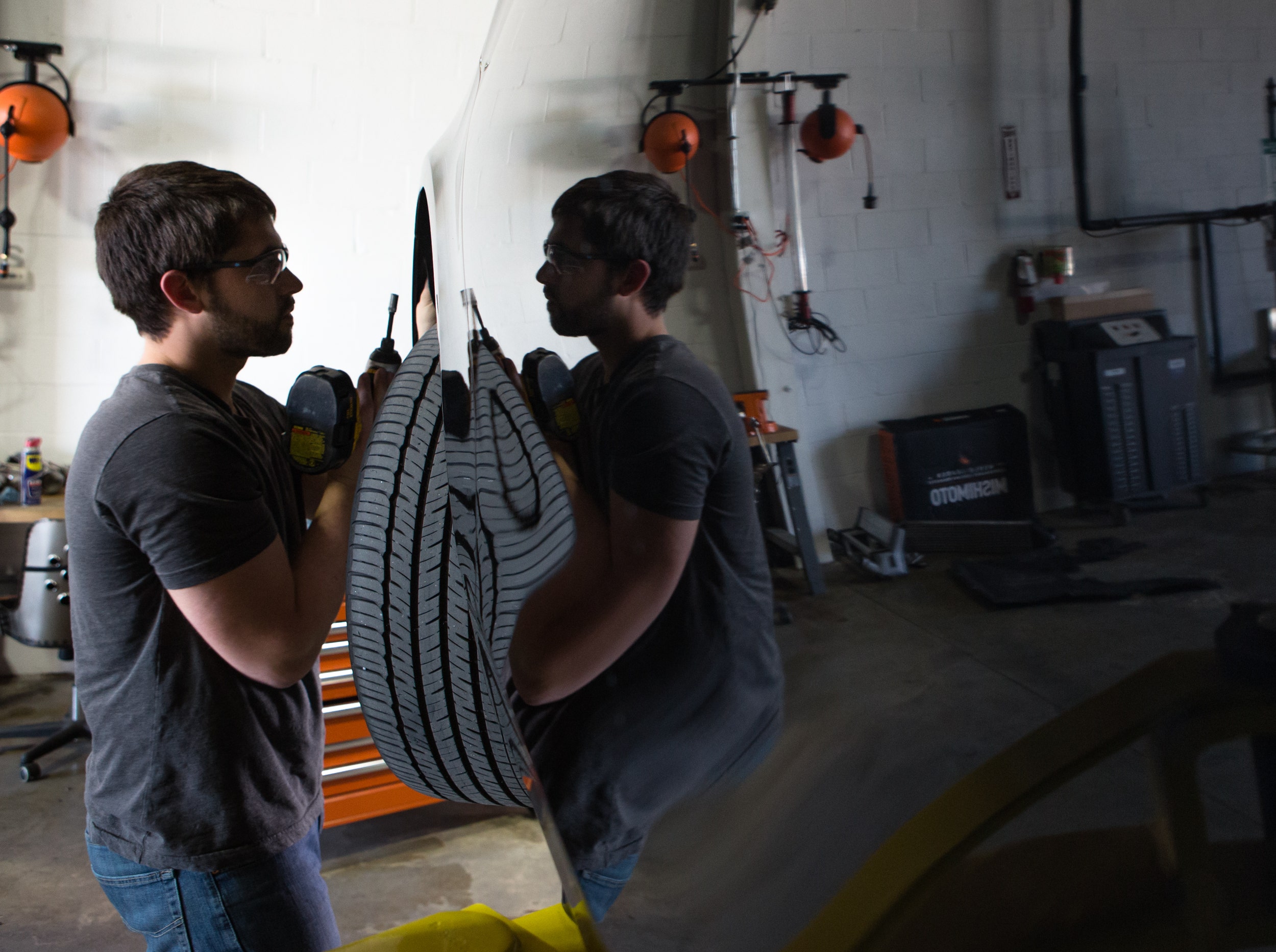
Ultimate Cooling - 2012-2016 BMW F2X/F3X Intercooler R&D Part 2 - Design Plans
When I last left off our engineer, Steve, was busy scanning and creating a 3D model of the F30 stock unit as a reference for our new design. There is an impressive amount of engineering that has gone into this intercooler project already, with more to come. One of the reasons for this attention to detail is because of the wide range of models that this new cooler is going to fit, as seen by our photo gallery. Another reason is because BMW has a pesky habit of living up to their moniker, "The Ultimate Driving Machine," they leave little room for error.
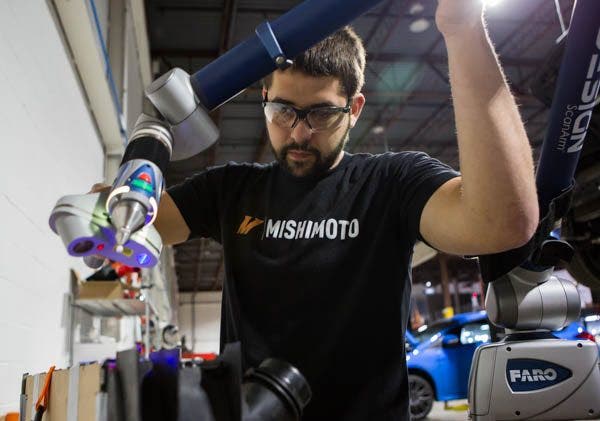
Steve working the Faro Design ScanArm to create a 3D model of the stock intercooler unit.
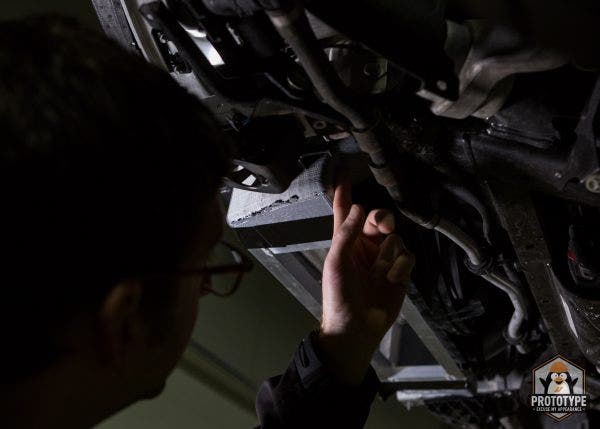
I've always been a huge fan of BMW, especially when it comes to the meticulous engineering that goes into each of their vehicles. Every model they put out is designed to last. Whether it be a 28-year old 3-series speeding around the flat back roads of New Jersey, or the much bigger and heavier X3 taking on the winding mountain roads of the Colorado Rockies, leaving a smile on your face also seems to be a design requirement. For most BMW owners, the thorough engineering and attention to detail is more than enough, and typically such thought in the design process shouldn't lead to adverse characteristics. However, we saw differently upon peeling back the front bumper cover of our loaner 335i.
There were a few recurring themes in the stock review of BMW's intercooler which were the abundance of different shrouding and duct work behind the bumper cover, the lack of space to work with, and the wide range of fitment our new design has to fit. These three factors left us with two different designs to choose from.
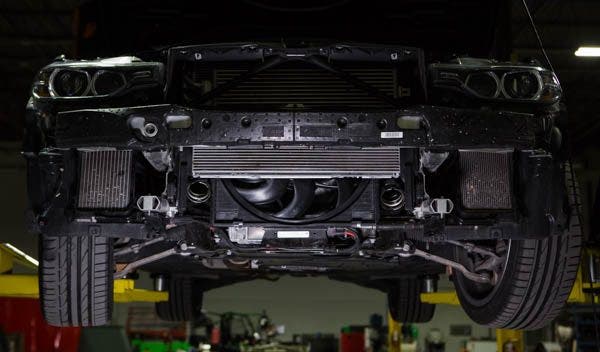
The disassembled front end of our loaner 335i xDrive. The section of the fan that is showing is about as far down as we can go with our new design.
The first design we were thinking of was an intercooler similar to our E9X unit in which we would just expand the width of the core to increase the volume. We already have a baseline of the general performance and fitment of this design, so it seemed almost like a no-brainer. Almost. One of the problems we would run into includes, of course, fitting it with the factory shrouding. Unlike the E9X, we're designing an intercooler to fit on 3 different models, each with different variations on the equipment and styling packages.
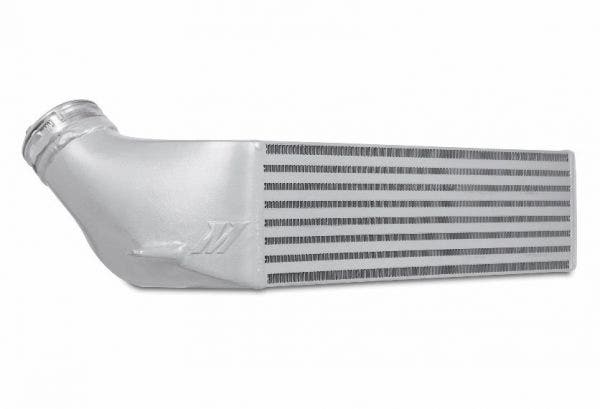
Our E9X 335i intercooler.
Performance with this design also becomes an issue. With a thicker core, yes, there is an increase of volume, but as it heat-soaks, the returns would be at a higher temperature since there are now more layers of fins for the airflow to penetrate. Increased core volume is always an improvement, but as the core thickness increases, the return temperture increases. As the cold air travels from the front of the intercooler to the back, it's picking up more and more heat. So, the front of the core might receive ample cooling, but the rear section will still see higher temperatures.
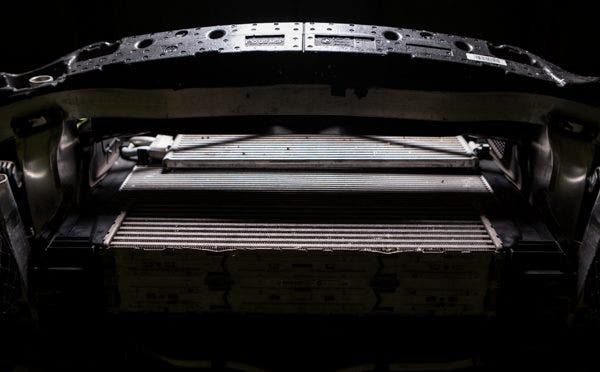
Another viable design option was to stretch our new intercooler over the available space in the front of the Bimmer, with a design that is both tall and thin. Filling the space between the primary radiator and the crash bar means having a core that has an increase in volume and surface area over the stock heat exchanger. An additional benefit to this design would be a thinner core, meaning the heat can be transferred from the charged air more efficiently.
There are, of course, some drawbacks to using this design. The biggest obstacle is operating around what keeps the car in one piece, the crash bar. The small price to pay for keeping you safe in the case of a crash is that this bar blocks airflow from the upper section of the intercooler. We plan on keeping the inlet diverter to make sure the full core is being used, but that won't matter if there isn't any airflow to a third of the core. On top of that, there's still the stock shrouding to contend with for fitment.
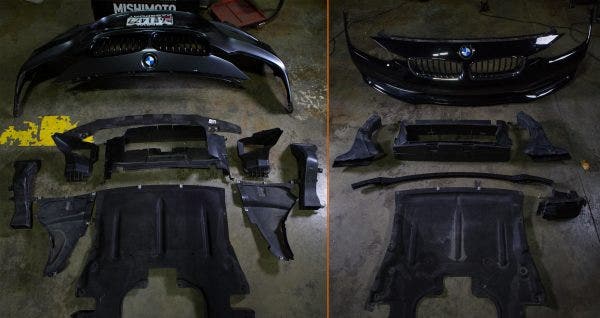
A comparison of the shrouding and duct work found behind the M-Sport fascia, left, and the standard fascia, right, on the F30's.
There is one main thing that keeps getting in the way of our design process: the shrouding. If it's a constant burden, why not get rid of them all together, or make them fit the design? Well, it's not that simple. For starters, modifying stock parts can get a little dicey. The biggest concern would be voiding the manufacturer's warranty on your BMW, since most of the F2X and F3X models on the road today are still covered. We wouldn't want to be the reason why you would have to pay out of pocket for all your maintenance needs. On top of that, any kind of modification to the car or original components will only make the installation more complicated.
The only model on our fitment list that would possibly require any modification would be the M2 because of the more intricate front support, but we'll leave it up to you on whether you want to modify this piece or just remove it. So, we decided that instead of modifying your shrouding, you just won't put it back in after installing our intercooler. With the factory shrouding out of the way, Steve had more freedom to work on a design that would not only fit across the long list of models, but also outperform the stock unit and competitors.
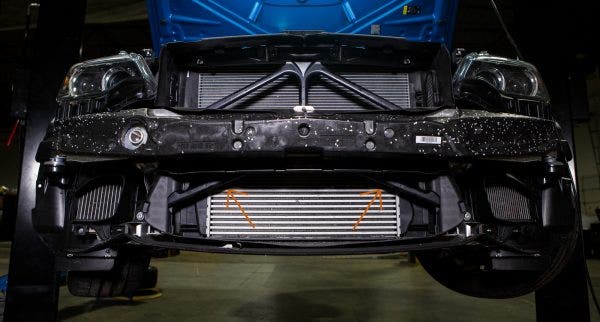
The orange arrows indicate the front support braces that would impede installation on the F87 M2. These will need to be trimmed if the full support brace is not removed.
Removing the factory shrouding will change the flow of air into the intercooler and cause issues with directing airflow, of course. Without all that plastic mounted behind the bumper, the airflow is not guided, and while most of it will be passing through the intercooler, we want to make sure that all the air is being crammed through those fins and delivering the best returns into your intake manifold. We saw that as an advantage.
While the shrouding on the standard bumpers will still fit with our design, we took the liberty of designing our own sets of shrouds to direct the airflow to the intercooler. Steve has designed a set specifically for the M-Sport kits, which will mate with the factory brake ducting, and seal against the crash bar at the top back side of the bumper cover. For those of your without the M-Sport aero kit, don't worry. There will also be a set included for the standard bumpers. They will feature a similar design, but will have a cutout for the lower bumper support bar. In both cases, these new shrouds will create almost a sealed passage directing the incoming airflow straight into the intercooler.
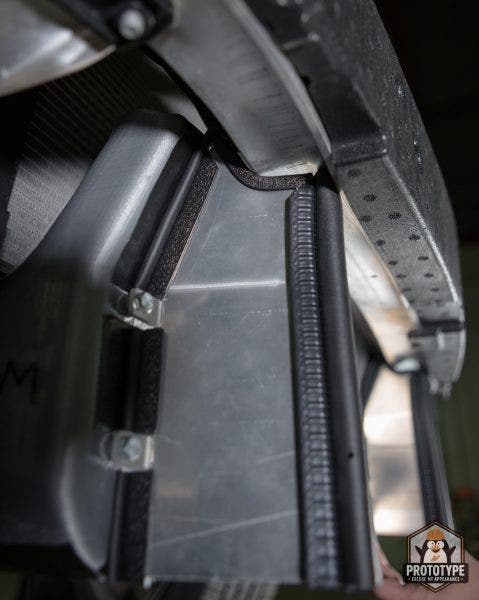
We want our included shrouding kits to have a snug fit to make sure that the intercooler is getting the maximum amount of airflow.
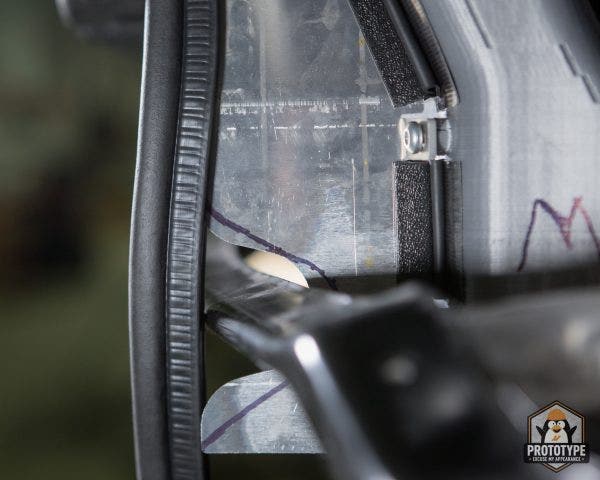
Before we get to the big reveal or what our plans are, let's go over the other improvements to the intercooler. On the top of that list, aluminum end tanks. Plastic, while light and easier to produce, just won't be as durable as our aluminum tanks. Over time the stock plastic end tanks will degrade, which can cause cracks and leaks, leading to less power to your N55 or N20, but the metal tanks can stand up to the elements, and improve the airflow into the core. The end tanks will get some help from diverters that will be incorporated into the inlets to ensure the air makes full use of our new core. The core construction will also be changed from tube-and-fin to bar-and-plate with our new design. While the tube-and-fin construction has its advantages for the manufacturer, a bar-and-plate core will have better cooling properties (For more information on the differences in intercooler construction, check out our technical article). However, the improvements to the core can only be as good as the overall design of the intercooler itself.
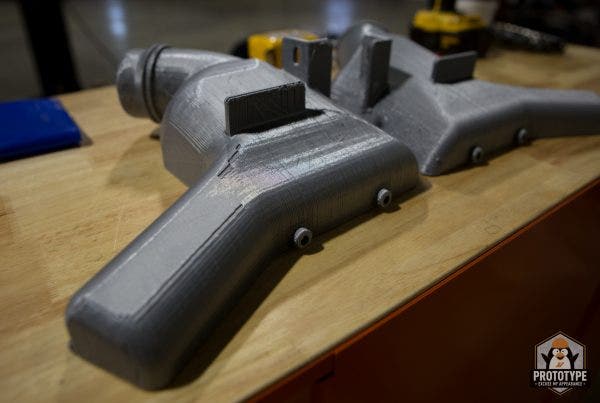
Although we repeatedly talk about the downsides to plastic end tanks, it's still a great material to use for 3D printing and quick turnaround on fitment prototypes.
There is one more potential design for our new intercooler that was not previously mentioned: a stepped core. Some of you might be familiar with a stepped core design if you've already been in the market to upgrade the intercooler in your F2X or F3X. For those of you who aren't familiar, a stepped core incorporates elements from both designs mentioned above. The main section of the core gets some extra width, and the front extends straight up to fill in the empty space between the crash bar and radiator. Though this design increases core volume, the top section of the step doesn't receive as much airflow, and restricts air to the radiator and AC condenser.
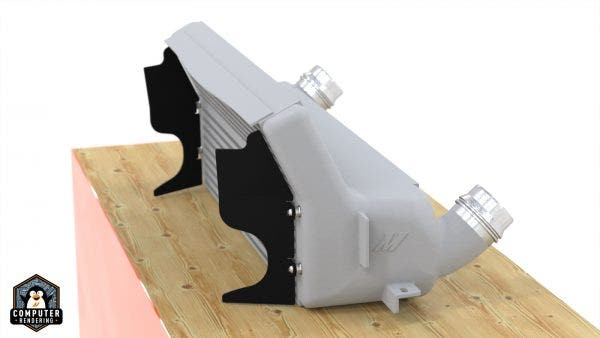
Computer rendering of the new intercooler design
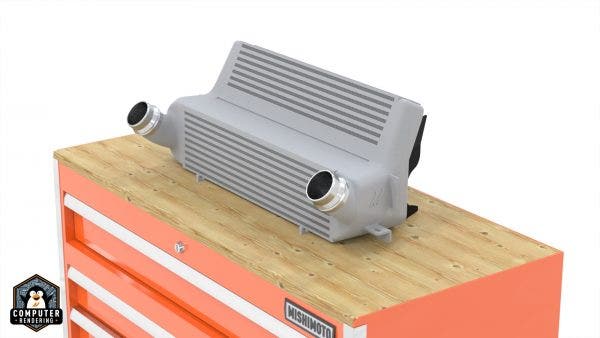
We are getting around these drawbacks by taking the stepped core concept and making it our own. We're adding width to the base of the core, and Steve gave the top section of the step a 115-degree angle. We designed this intercooler to mate up with the bottom edge of the crash bar, meaning all airflow from the bottom will be directed into both sections of the intercooler, without blocking the radiator and AC condenser. When all is said and done, we're looking at an estimated 963in³ core volume which is a 96% increase over the stock unit. As I mentioned, there will be two sets of shrouding included specifically designed for both the M-Sport and standard models, to make sure the air flows where we want it.
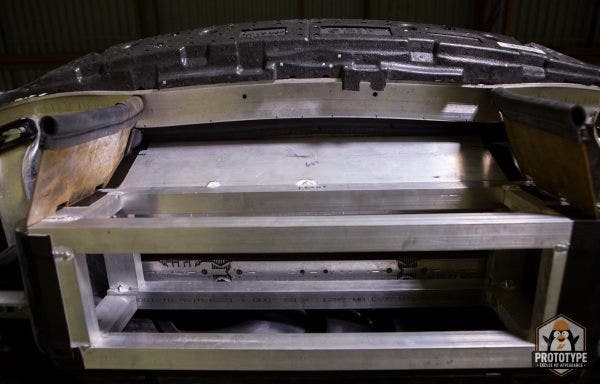
Our initial test fitting with the first take on the shrouding on our 335i loaner. With the weather stripping the top section rests against the crash bar and the shrouds will mate up to the fascia.
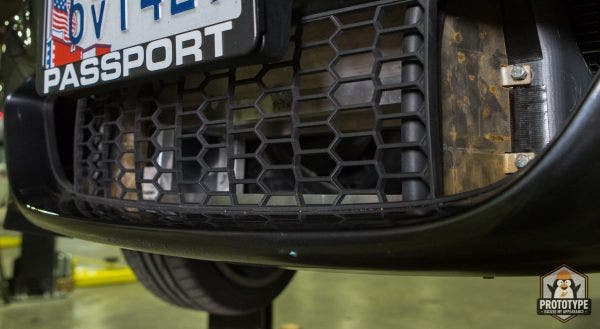
A peek as to what the installed intercooler will look like on your F30. Plenty of room for the optional brake cooling ducts.
As you read this, our sample run of this intercooler are already in the process of production, and will be back in Delaware in the coming weeks. Even with only the prototype fabricated, Steve has already dubbed this intercooler "The Sexiest Intercooler of All Time."
Since this project has called for loaning several different BMW's, I couldn't help but incorporate a small gallery of the beautiful vehicles that spent some time at our R&D facility in New Castle.
Thanks for Reading!
-Nick




